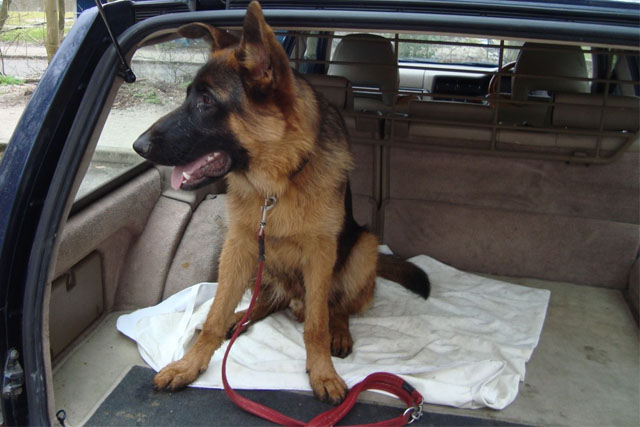One in three drivers risk driving with a loose dog in the car


Distraction
One in three drivers drives with their dog loose in the car, and this can pose several risks. One of the main risks is distraction. When a dog is loose in the car, it can easily move around and distract the driver. The dog may jump onto the driver's lap, obstruct their view, or even try to climb onto the dashboard. This can cause the driver to take their eyes off the road, leading to a potential accident.
Not only can the dog's movements be distracting, but their behavior can also be a source of distraction. A loose dog may bark, whine, or try to get the driver's attention, further diverting their focus from the road. This can be especially dangerous in critical situations where split-second decisions are required.
Injury to the dog
Driving with a loose dog in the car also puts the dog at risk of injury. In the event of a sudden stop or a collision, the dog can be thrown around the car, potentially hitting hard surfaces or being ejected from the vehicle. This can result in serious injuries or even death for the dog.
Additionally, if the dog is not properly secured, it may try to escape from the car through an open window or an open door. This can lead to the dog running onto the road and being hit by another vehicle. It is essential to ensure the safety of our furry companions by restraining them properly while driving.
Injury to the driver and passengers
Driving with a loose dog in the car not only puts the dog at risk but also endangers the driver and passengers. In the event of a sudden maneuver or a collision, an unrestrained dog can become a projectile, potentially causing harm to everyone in the car.
The force of impact from a loose dog can be significant, especially if the dog is large or heavy. It can lead to injuries such as broken bones, lacerations, or even head trauma. These injuries can be severe and may require immediate medical attention.
Increased risk of accidents
Having a loose dog in the car increases the risk of accidents. As mentioned earlier, a dog can be a source of distraction for the driver. When the driver's attention is divided between the road and the dog, their reaction time may be slower, making it more difficult to respond to potential hazards on the road.
In addition to distraction, a loose dog can also interfere with the driver's ability to operate the vehicle properly. For example, if the dog steps on the accelerator or the brake pedal accidentally, it can lead to sudden acceleration or braking, potentially causing an accident.
Legal consequences
Driving with a loose dog in the car can also have legal consequences. In many jurisdictions, it is considered a traffic violation to drive with an unrestrained pet. If caught, drivers may face fines, points on their driving record, or even have their license suspended.
Furthermore, if an accident occurs as a result of driving with a loose dog, the driver may be held liable for any damages or injuries caused. This can result in costly legal battles and potential financial repercussions.
In conclusion, driving with a loose dog in the car is a risky behavior that should be avoided. It poses dangers such as distraction, injury to the dog, injury to the driver and passengers, increased risk of accidents, and legal consequences. It is important to prioritize the safety of both ourselves and our furry friends by properly restraining them while driving.


Related posts